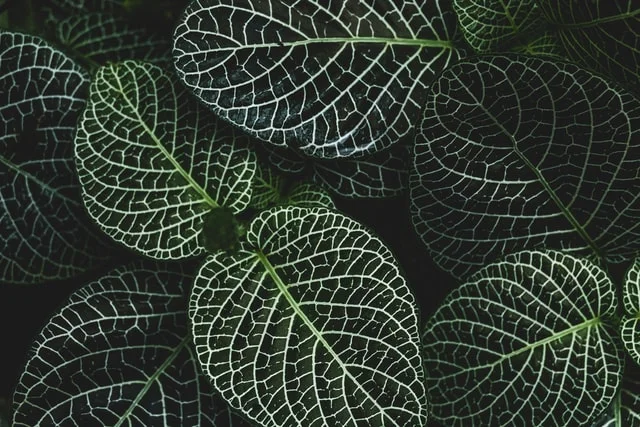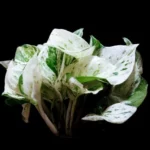Table of Contents
How to Care for Painted Leaf Begonia
Painted leaf begonia (which is also known as Rex Begonia and Fancy Leaf Begonia) is a perennial that is native to tropical India and often is cultivated for its famously large, multi-colored leaves.
The wing-shaped leaves can grow up to nine-inches in length and often are a blend of colors.
Depending on the variety, leaves can combine colors such as pink, red, white, purple or silver and are patterned around the edges. Most Rex begonia are rhizomatous, which means that they often grow by creeping along and sending roots out of their leaf nodes.
Painted leaf begonia can easily be grown indoors as a house plant and will reach a height of 24 inches when fully mature.
What Does Your Painted Leaf Begonia Require?
Light Requirements
In general, Painted leaf begonia will be happiest with indirect, bright light, but it is important to keep the following in mind as well:
- Painted leaf begonia that is grown outside in warmer climates will prefer full-morning sun followed by dappled afternoon sun or shade.
- The plants will adapt to more shade as necessary, but their foliage will be less full and compact as a result.
- When grown indoors your Painted leaf begonia will require bright, but indirect sunlight throughout the entire year, about 14 hours of daily light during the growing season.
- If you are worried that your plant isn’t getting enough light, you can always supplement it with artificial light.
Avoid direct sunlight as this may cause scorched leaves or your Rex begonia’s color to fade.
Temperature Requirements
As a tropical plant, Rex begonia will be happiest in temperatures that consistently stay above 55 degrees Fahrenheit. Freezing weather should be avoided at all costs as temperatures this low can quickly kill your plant.
- When attempting to cultivate Painted-leaf begonia in colder climates, it is best to plant them outdoors after the last threat of frost has passed.
- The plants can be overwintered if brought in before temperatures drop in the early fall.
- Painted leaf begonia can be easily grown outdoors year-round in USDA climate zones 10-11.
- When grown indoors, try to keep your painted leaf begonia in a temperature between 62-and 72-degrees Fahrenheit.
- Your plant will appreciate slight differences in temperature for day and night.
In higher temperatures, be sure that the air is suitably moist and not too dry.
Humidity Requirements
Like their temperature requirements above, Painted leaf begonia also require a higher humidity level, 50% or higher is best.
- Place your Painted leaf begonia in a room that is naturally humid, such as a bright bathroom or a kitchen.
- If you are struggling to keep your plant’s environment humid enough, consider an intervention such as placing your plant on a wet pebble tray, or in a room with a humidifier.
- Keep your plant away from drafty or dry areas as these will inherently be less humid spaces for it.
- As a last resort, you may choose to hand mist the area around your plant several times a day.
It is important not to mist your plant’s leaves directly as this can lead to problems like mildew developing.
Soil Requirements
Painted leaf begonia will have differing soil requirements depending on whether they are being grown indoors or outdoors.
Cultivated Outdoors
- Painted begonias prefer light soil that has nutrient rich humus.
- Place your plant in an area of your garden that drains well, and doesn’t stay wet or soggy long after a heavy rain.
- Compost over the roots to protect them from sun and other dangers.
Cultivated Indoors
- When planted indoors, Painted leaf begonia do best in a soil-free atmosphere.
- Make sure to use a pot that has a drainage hole at the bottom so that excess water doesn’t drown your Painted leaf begonia’s roots.
- An indoor mix containing only peat moss, perlite or vermiculite would be a great option.
- Resist the urge to add things you might normally when potting, such as compost, as this will only serve to keep your plant’s root system too wet.
- Begonias prefer to be slightly pot bound, so don’t use an overly large pot for your plant.
How to Water
- During the summer, water your Painted leaf begonia whenever the top soil looks or feels dry to the touch, or approximately once every five days.
- During winter months, you can ratchet watering back to once weekly or even less.
- If your Painted leaf begonia never seems to fully dry out in between watering, it may be because it is planted in too large of a pot.
- Rex begonia will wilt if not watered enough, this can be fixed by giving them a deep soaking immediately.
Just like with misting around your plant, when watering, it is important not to get any water on your plant’s leaves as that may cause spotting.
How to Fertilize
Painted leaf begonia only require fertilizer during the summer growth season. During this time, it is best to use a diluted water-soluble fertilizer. Dilute your fertilizer to one half the recommended dosage.
Fertilizer feedings should be given to your plant on a monthly basis.
Extra Tips for Painted Leaf Begonia
Pests & Diseases
Painted leaf begonia are relatively hardy plants with few natural diseases or pests to worry about, however, there are two issues you should be aware of when cultivating your own plant.
Powdery Mildew
If you notice a white powdery substance on the leaves of your plant this is most likely powdery mildew. This occurs when your plant is kept too wet or water is allowed to stagnate on leaves.
To address this issue, simply keep your plant as dry as possible, and the issue should resolve itself on its own.
Mealybugs
If you notice small white masses grouped near the joints of your plant’s stems, this is likely an infestation of Mealybugs.
This issue is easy to treat, simply swab the infestation with some rubbing alcohol using a cotton swap or Q-tip to remove the mealybugs.
Pruning
Pruning is not necessary for Rex begonia, but you may choose to pinch back your plant if it grows too leggy or tall with no ill-effects. You may also remove damaged or brown leaves by cutting them by the base of their stem.
Propagation
Because of their rhizome nature, these particular begonias are very easy to propagate. Simply take a cutting of one of your plant’s side shoots, as this is actually a part of the root system already.
Place your specimen in clean perlite or peat moss and water thoroughly. Let the soil dry slightly but keep moist until your plant has sent off new growth.


